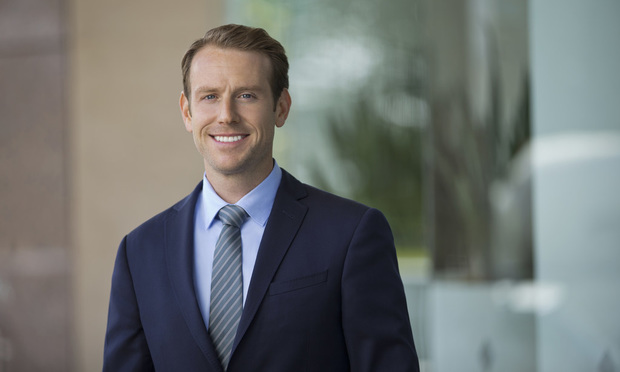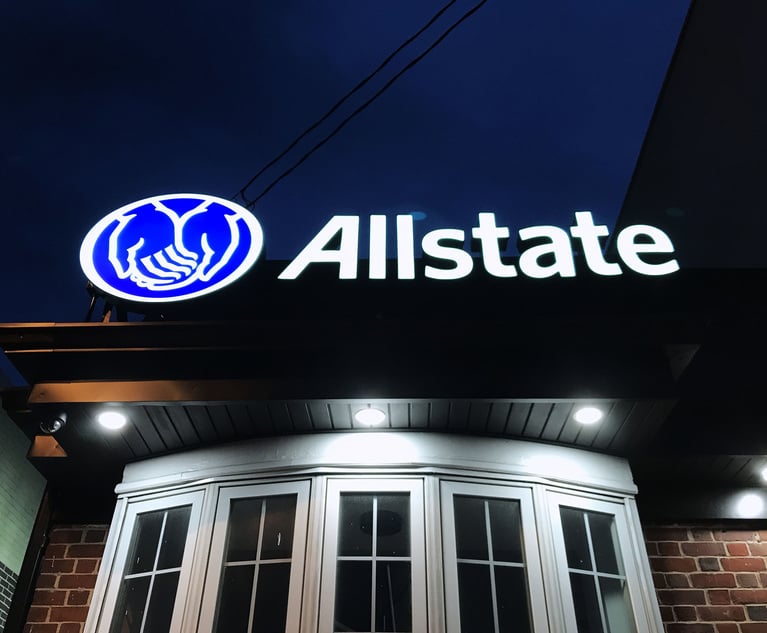Between a Rock and a Hard Place: Protecting Employee Mobility and Negative Trade Secrets
When Judge William Alsup asked the lawyers in Waymo v. Uber—the recent showdown over self-driving car technology—if engineers really had to get lobotomies before going to their next job, he wasn't just asking if they had to “forget” what makes their former employers' technology work. He was also asking if they had to forget what did not work for their former employers.
March 12, 2018 at 03:00 PM
9 minute read

When Judge William Alsup asked the lawyers in Waymo v. Uber—the recent showdown over self-driving car technology—if engineers really had to get lobotomies before going to their next job, he wasn't just asking if they had to “forget” what makes their former employers' technology work. He was also asking if they had to forget what did not work for their former employers.
Unfortunately for engineers—and their employers and the competitors that want to hire them—there is no simple answer under California and federal law. While the results of R&D that prove a certain process or approach does not work for a technology could be commercially valuable, the law is unclear on whether that information—“negative trade secrets” or “negative know-how” in legal jargon—can be a trade secret. Especially in a state like California with strong policies favoring employee mobility and open competition. So what is the difference between a “positive” and “negative” trade secret? Does an engineer have to pretend he does not know what doesn't work and repeat mistakes at his next job? And how should the law handle hiring talented engineers who learned practical lessons about dead ends or pitfalls to avoid while on the job?
What's a Negative Trade Secret … and Why Would We Want to Protect It?
Under California's Uniform Trade Secret Act (CUTSA) and the federal Defend Trade Secrets Act (DTSA), a “trade secret” can include any kind of information, regardless of whether it's written down or just retained in one's memory, so long as it derives independent economic value from not being generally known, and is the subject of reasonable measures to keep it secret. That definition, according to the CUTSA's legislative commentary, includes information that is valuable “from a negative viewpoint.” Why? Because “the results of lengthy and expensive research which proves that a certain process will not work could be of great value to a competitor.” Judge Alsup tentatively planned to instruct the jury that such research can be a trade secret.
But it's unclear how much water that commentary should carry. California adopted it verbatim from the American Bar Association commission that drafted the Uniform Trade Secrets Act (UTSA) and has never revisited it. While some California appellate courts have given substantial weight to commentary taken verbatim from other Uniform laws' commissions, the California Supreme Court cases they rely on concern commentary from California commissions on California law, not voluntary national commissions like the ABA, whose focus is uniformity across states rather than on California law and policies. In addition, since the CUTSA's enactment, California appellate courts have rejected protectionist trade secret doctrines (like inevitable disclosure) that the vast majority of other states have embraced in interpreting the UTSA, because of competing California policies (like employee mobility and open competition).
There is also an important caveat. As Judge Alsup recognized, even if certain negative information is valuable, it cannot be protected by trade secret law if “it remains one of those practical on-the-job-insights that become part of the engineer's general skills, talents and abilities, or can be found in the literature.” That type of information—“general engineering principles in the public domain and part of the intellectual equipment of technical employees”—can't reasonably be considered secret and thus is not protectable. Still, juries would be left with the particularly tricky task of delineating the line between general know-how and negative trade secrets.
But … Can We Really Force Someone to Repeat Mistakes at His Next Job?
California has favored open competition, employee mobility, and innovation since it enacted what is now Business & Professions Code Section 16600 more than a century ago, in 1872. State law ensures that Californians retain the right to pursue any lawful employment and business of their choice. To that end, California courts are not hesitant to invalidate employers' attempts to impose improper restraints on competition and mobility in employment contracts, like covenants not to compete, even though employers can use such agreements to prevent its employees from working for a competitor in most other states. At the same time, because of California's policy of protecting trade secrets, noncompete covenants remain enforceable in California if they are “necessary to protect the employer's trade secrets” (or fall within Section 16601's safe harbor).
Juries must balance these competing doctrines and policies in deciding whether certain information qualifies as a trade secret. That is no easy task. Negative trade secrets complicate it even further. For example, take this variation on a hypothetical Judge Alsup posed in Waymo v. Uber: Charles Townes's boss at Company A asks him to figure out whether a certain approach for using lasers works. Charles applies his professional skills and standard techniques, and figures out that it doesn't work; it's a dead end. The work Charles performed may have been expensive and taken years, but is he really supposed to forget the dead end when he moves to Company B and reinvent the wheel there? Would requiring him to do even be possible, or at best a legal fiction? Would Charles and Company B be liable for trade secret theft if Charles shook his head when his new team asked if he thought they should pursue an approach he knows won't work?
Some trial courts have said no, refusing to require a lobotomy in the context of both positive trade and negative secrets. For example, one Oregon federal court rejected the idea that companies could use the courts to compel an employee “to wipe clean the slate of their memory.” In that case, the court refused to force a company's former sales representative to go through the “fiction” of calling potential buyers to obtain contact information he already knew. A California federal court also refused to hold a former employee liable for disclosing elements of a software program that “did or did not work for Mattel” and “the learnings that came out of that project.” And another California federal court rejected an employer's attempt to claim trade secret protection in its former software engineers' “'technical know-how' regarding what does and does not work in the process of designing digital media management software,” as compared to “specific design routes” the engineers' new employer might be restrained from using, as “too nebulous.”
So How Do You Protect Negative Trade Secrets and Keep Hiring Talent?
Only one California appellate court has addressed the concept of negative trade secrets, Courtesy Temporary Service v. Camacho. In a 1990 decision, the court acknowledged the CUTSA commentary that negative information acquired by lengthy and expensive efforts, like a customer list showing the businesses that “have not subscribed to plaintiff's services,” can be valuable. But the court merely held that such information “deserves protection as a 'trade secret'” because it necessarily disclosed the plaintiff's actual customers. In other words, the negative trade secret deserved protection only to the extent it disclosed a protectable positive trade secret (the actual customer list) and thus should be accounted for in valuing the positive trade secret.
That approach is also consistent with the Ninth Circuit's pre-CUTSA decision in Winston Research v. Minnesota Mining and Manufacturing (Mincom). There, the court reversed a decision enjoining Winston from using Mincom's former employees' “knowledge of what not to do” and “how not to make the same mistakes” in developing a high-performance motor. The court held that “former employees cannot be denied the right to use their general skill, knowledge, and experience” in a new job “even though acquired in part” at their last one. In another pre-UTSA decision, the U.S. Court of Appeals for the Third Circuit agreed, explaining that it “would be loath to 'act as a judicial eraser to blot out … knowledge and skill'” acquired by employees such as “the experience necessary to avoid past mistakes and failures,” or “negative know-how,” in future employment. The alternative would be to prohibit employees from working in their areas of expertise, severely undercutting policies like California's favoring employee mobility and open competition.
Limiting trade secret protection to information that actually discloses a positive secret—protecting only what does work—while also accounting for the cost of R&D in proving what didn't work to get there, may strike the proper balance between protecting companies' technological advances, on the one hand, and mobility, competition, and innovation, on the other. Grounding the notion of negative information or know-how within the framework for protecting positive trade secrets allows companies to hire talent and build on past breakthroughs without competitors wielding trade secrets law as a weapon, especially in nascent industries where companies are racing to identify and perfect approaches to technologies that have the potential to change entire industries. Engineers like Charles also would not be forced to repeat past mistakes at their new jobs, unless doing so was necessary to protect a positive trade secret, which businesses can enforce by using and policing robust confidentiality and employment agreements that require new hires to agree not to use or disclose their former employers' confidential information. And judges would not need to engage in the absurdity of instructing juries that employees have to get lobotomies and forget what doesn't work if they want to change jobs.
Maxwell V. Pritt is a partner at the law firm Boies Schiller Flexner, and represented Uber and Ottomotto in Waymo v. Uber Technologies, No. 17-0939 WHA, which went to trial in February of this year. The case settled after four days of trial. The Recorder recently published an article on other aspects of trade secret law in Waymo v. Uber by Max's colleagues, Karen Dunn and Meredith Dearborn, titled “Protecting Trade Secrets and Prevent Frontal Lobotomies.”
This content has been archived. It is available through our partners, LexisNexis® and Bloomberg Law.
To view this content, please continue to their sites.
Not a Lexis Subscriber?
Subscribe Now
Not a Bloomberg Law Subscriber?
Subscribe Now
NOT FOR REPRINT
© 2025 ALM Global, LLC, All Rights Reserved. Request academic re-use from www.copyright.com. All other uses, submit a request to [email protected]. For more information visit Asset & Logo Licensing.
You Might Like
View All
State Appeals Court Revives BraunHagey Lawsuit Alleging $4.2M Unlawful Wire to China
3 minute read

Apple Disputes 'Efforts to Manufacture' Imaging Sensor Claims Against iPhone 15 Technology

Lawsuit alleges racial and gender discrimination led to an Air Force contractor's death at California airfield
7 minute readTrending Stories
- 1We the People?
- 2New York-Based Skadden Team Joins White & Case Group in Mexico City for Citigroup Demerger
- 3No Two Wildfires Alike: Lawyers Take Different Legal Strategies in California
- 4Poop-Themed Dog Toy OK as Parody, but Still Tarnished Jack Daniel’s Brand, Court Says
- 5Meet the New President of NY's Association of Trial Court Jurists
Who Got The Work
J. Brugh Lower of Gibbons has entered an appearance for industrial equipment supplier Devco Corporation in a pending trademark infringement lawsuit. The suit, accusing the defendant of selling knock-off Graco products, was filed Dec. 18 in New Jersey District Court by Rivkin Radler on behalf of Graco Inc. and Graco Minnesota. The case, assigned to U.S. District Judge Zahid N. Quraishi, is 3:24-cv-11294, Graco Inc. et al v. Devco Corporation.
Who Got The Work
Rebecca Maller-Stein and Kent A. Yalowitz of Arnold & Porter Kaye Scholer have entered their appearances for Hanaco Venture Capital and its executives, Lior Prosor and David Frankel, in a pending securities lawsuit. The action, filed on Dec. 24 in New York Southern District Court by Zell, Aron & Co. on behalf of Goldeneye Advisors, accuses the defendants of negligently and fraudulently managing the plaintiff's $1 million investment. The case, assigned to U.S. District Judge Vernon S. Broderick, is 1:24-cv-09918, Goldeneye Advisors, LLC v. Hanaco Venture Capital, Ltd. et al.
Who Got The Work
Attorneys from A&O Shearman has stepped in as defense counsel for Toronto-Dominion Bank and other defendants in a pending securities class action. The suit, filed Dec. 11 in New York Southern District Court by Bleichmar Fonti & Auld, accuses the defendants of concealing the bank's 'pervasive' deficiencies in regards to its compliance with the Bank Secrecy Act and the quality of its anti-money laundering controls. The case, assigned to U.S. District Judge Arun Subramanian, is 1:24-cv-09445, Gonzalez v. The Toronto-Dominion Bank et al.
Who Got The Work
Crown Castle International, a Pennsylvania company providing shared communications infrastructure, has turned to Luke D. Wolf of Gordon Rees Scully Mansukhani to fend off a pending breach-of-contract lawsuit. The court action, filed Nov. 25 in Michigan Eastern District Court by Hooper Hathaway PC on behalf of The Town Residences LLC, accuses Crown Castle of failing to transfer approximately $30,000 in utility payments from T-Mobile in breach of a roof-top lease and assignment agreement. The case, assigned to U.S. District Judge Susan K. Declercq, is 2:24-cv-13131, The Town Residences LLC v. T-Mobile US, Inc. et al.
Who Got The Work
Wilfred P. Coronato and Daniel M. Schwartz of McCarter & English have stepped in as defense counsel to Electrolux Home Products Inc. in a pending product liability lawsuit. The court action, filed Nov. 26 in New York Eastern District Court by Poulos Lopiccolo PC and Nagel Rice LLP on behalf of David Stern, alleges that the defendant's refrigerators’ drawers and shelving repeatedly break and fall apart within months after purchase. The case, assigned to U.S. District Judge Joan M. Azrack, is 2:24-cv-08204, Stern v. Electrolux Home Products, Inc.
Featured Firms
Law Offices of Gary Martin Hays & Associates, P.C.
(470) 294-1674
Law Offices of Mark E. Salomone
(857) 444-6468
Smith & Hassler
(713) 739-1250






